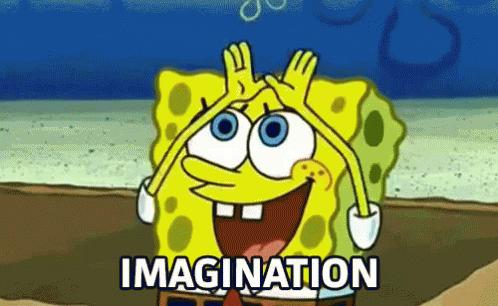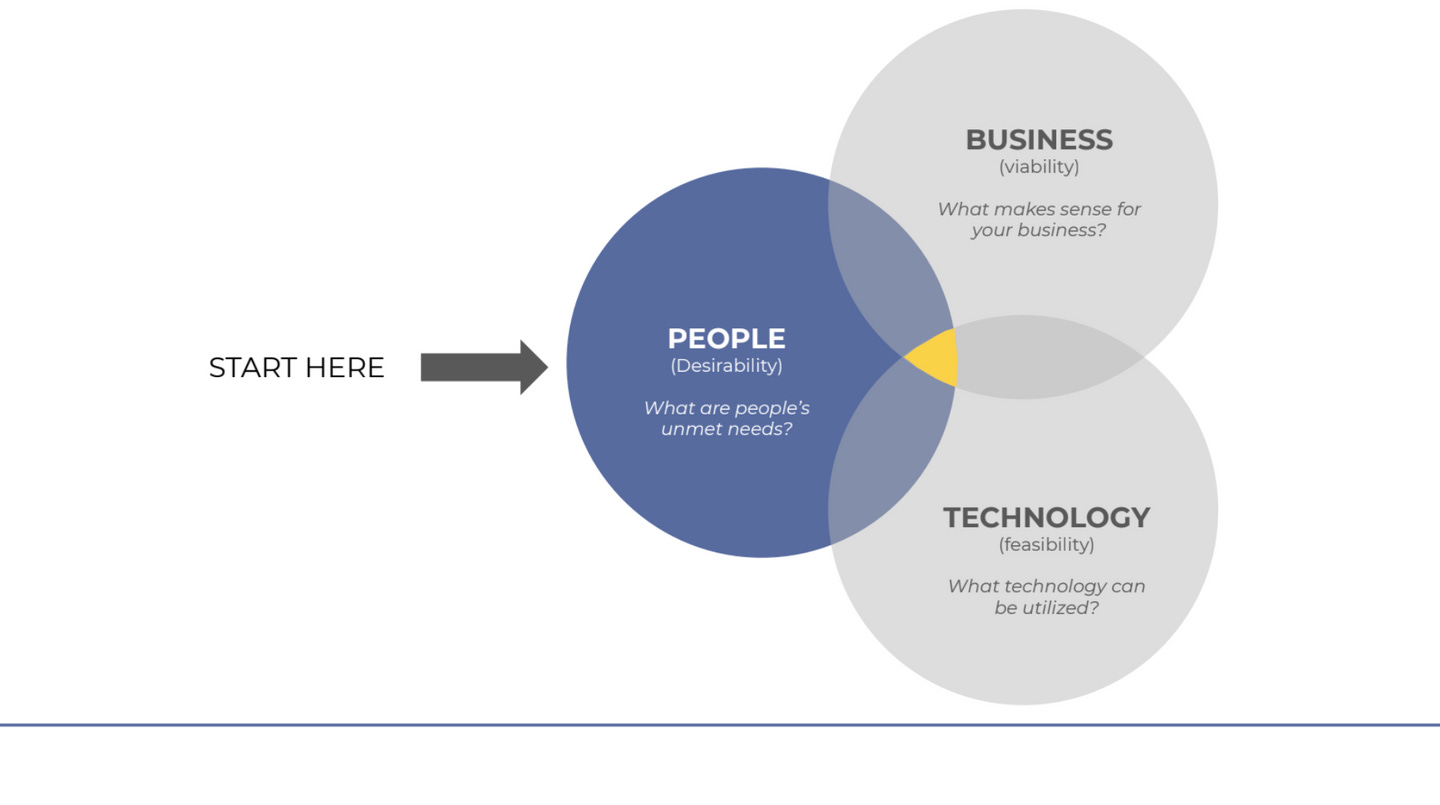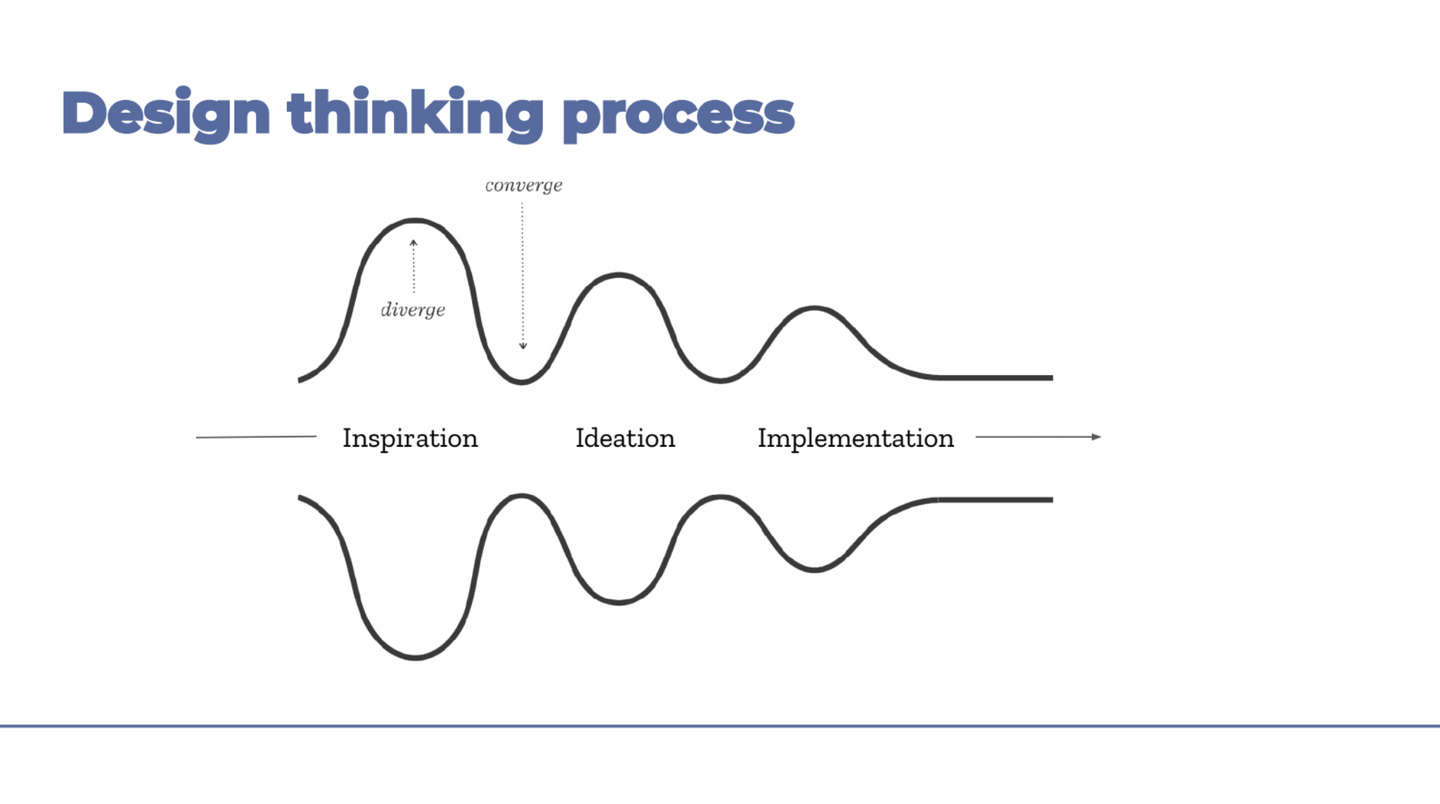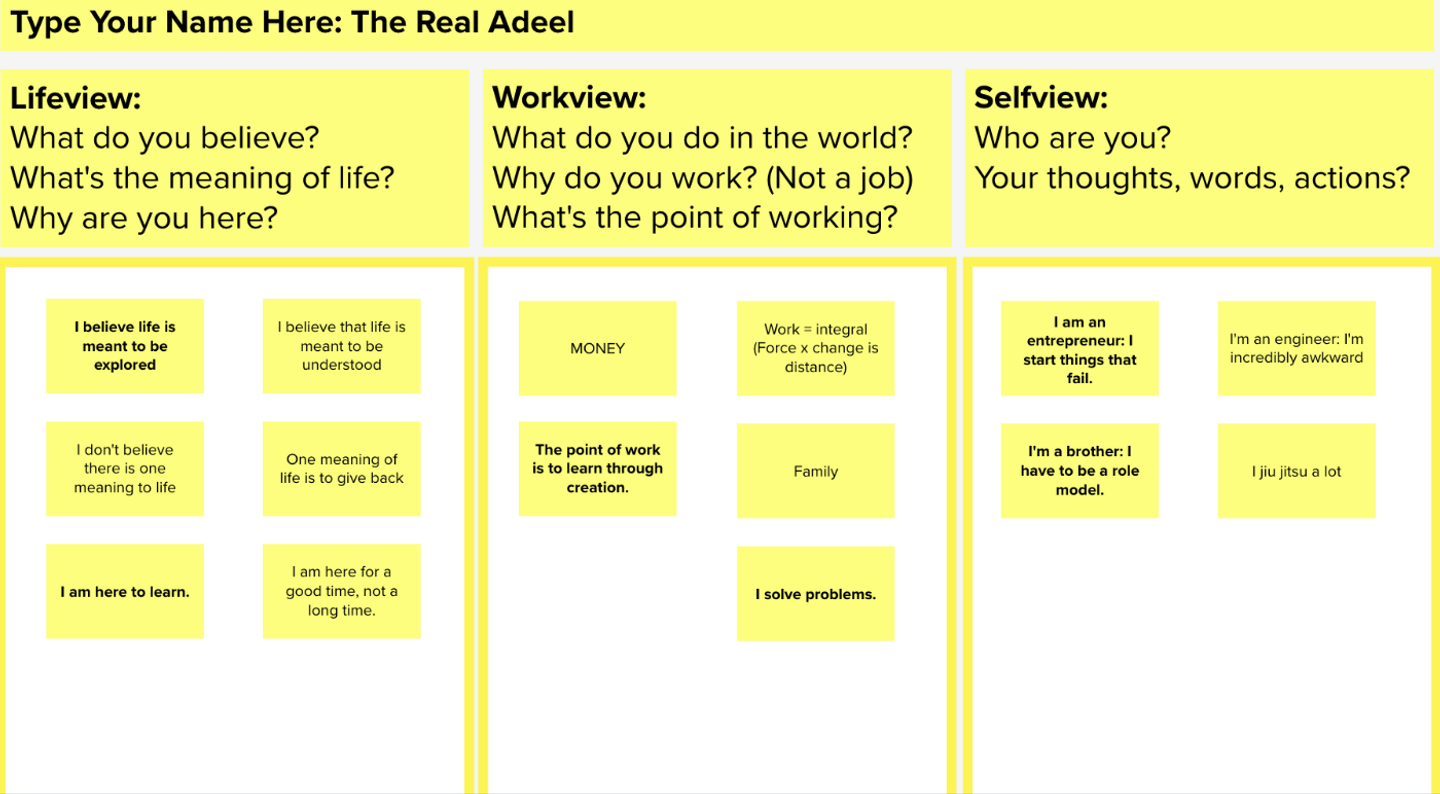Design Thinking: The Secret Weapon for Entrepreneurs
How Imagination Plays a Crucial Role in Startup Success
This week I was fortunate to speak with a group of 20 incredible entrepreneurs from the Future Founders fellowship. Their businesses range from changing negative thoughts to creating hype through social auctions and everything in between.
We covered the topic of design thinking - a concept popularized by the design consulting firm IDEO. They’re credited for numerous beloved inventions such as the apple magic mouse.
“Design thinking is a human-centered approach to innovation that draws from the designer’s toolkit to integrate the needs of people, the possibilities of technology, and the requirements for business success.” - Tim Brown, Executive Chair of IDEO
Shown another way, design thinking can be visualized as such:
Traditionally, business has operated in a three-lens structure, focusing on business or technology at first.
This might have worked during the past few decades, but as competition grows and new technology develops, businesses can no longer rely solely on those two factors.
Design thinking evolved as a way to center the human experience of the product in all our conversations. We focus on the core human need and problem that we’re trying to solve.
Distinct Elements of Design Thinking
There’s three key pieces to design thinking:
🌈 Inspiration
Researching the problem by talking to people experiencing the problem, reading white papers, collecting data
💡 Ideation
Creating ideas for potential solutions through brainstorming with an interdisciplinary and diverse team.
🤖 Implementation
Testing minimum viable products by asking people for feedback to learn and iterate on.
Convergent Vs. Divergent Thinking
When going through the three phases of design thinking, we typically go through an expansive, divergent phase, and a compressive, or convergent phase.
The divergent phase is where we brainstorm and collect a lot of different ideas. In practice this will look like creating a wall full of sticky notes, or a list full of bullet points.
The convergent phase is where we start to recognize patterns across the ideas we came up with in the divergent phase. We start to simplify and create structures. In practice this looks like throwing away the bad sticky notes, and grouping together similar sticky notes under a more broad heading.
It looks so easy and perfect, but in reality, it looks more like this:
Design-Your-Life
In my conversation with this group of 20 entrepreneurs, we applied the principles of design thinking to review their lives in a design-your-life activity called “Lifeview, Workview, Selfview”.
The reason we did this exercise is to 1. Bring the community together through deep conversation, but also 2. To find coherence across these three views.
Researchers have found that people who find coherence across these three views tend to view their life as more fulfilling and can extract more meaning out of their personal and work activities.
Here’s the questions we discussed - set a time for 10 minutes and ask yourself these. Once you’re done with brainstorming (divergent phase), see if you can find any patterns in your answers and highlight those (convergent phase).
Lifeview:
What do you believe?
What’s the meaning of life?
Why are you here?
Workview:
What do you do in the world?
Why do you work?
What’s the point of working?
Selfview:
Who are you?
What are your thoughts and words?
What are your actions?
If you get stuck, check out my own answers for inspiration. I highly suggest segmenting out 10 minutes to write down your own bullet points.
❓A Quick Question for You
What are some ways you can see design thinking help you in your own journey outside of design-your-life types of thinking?







